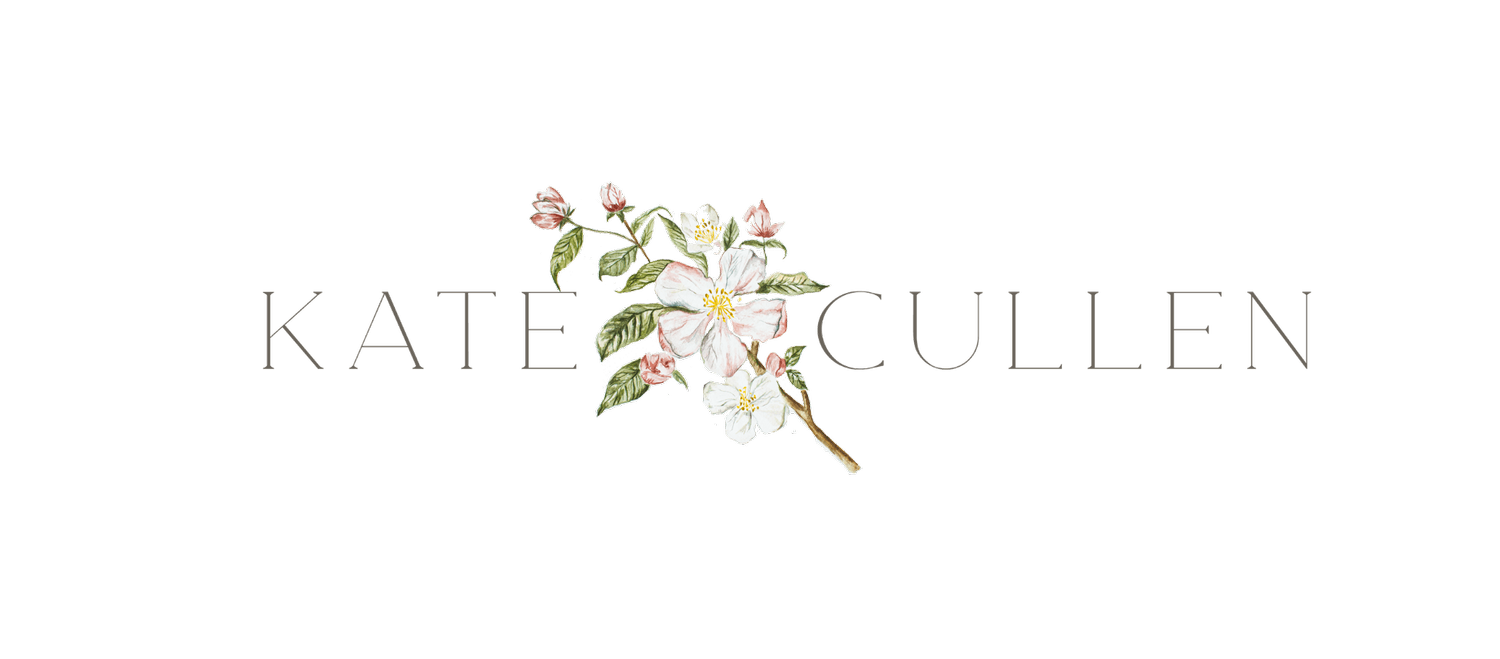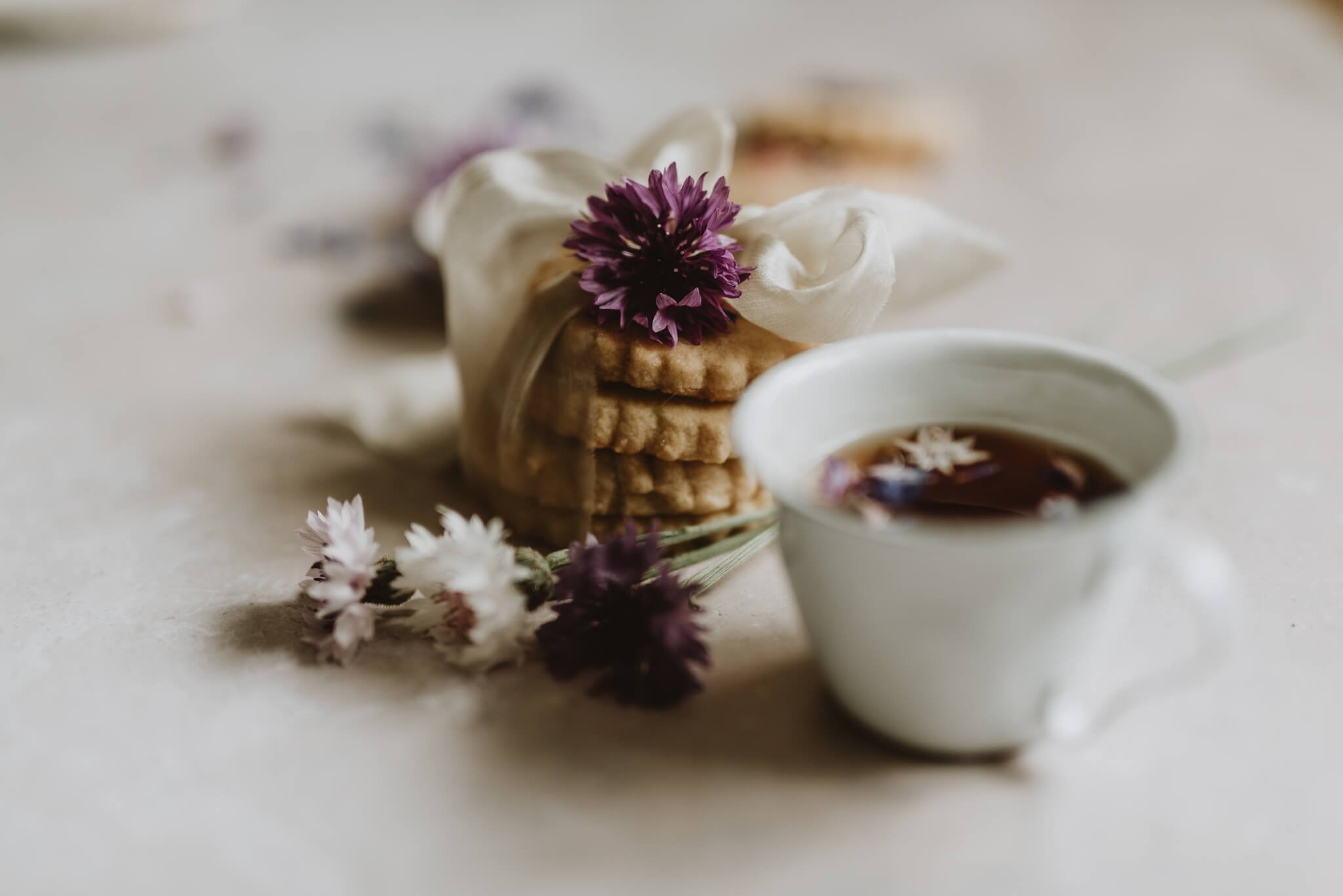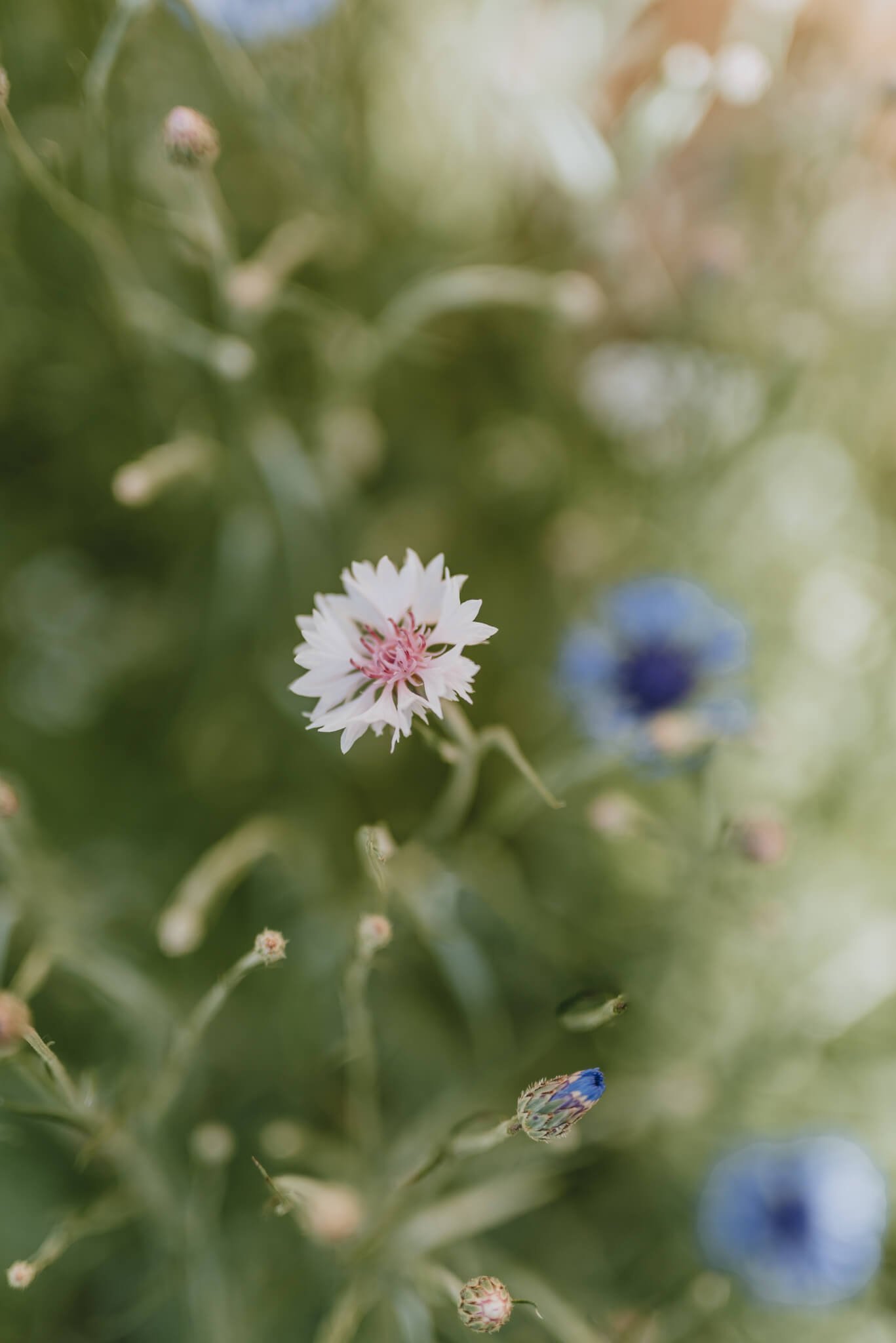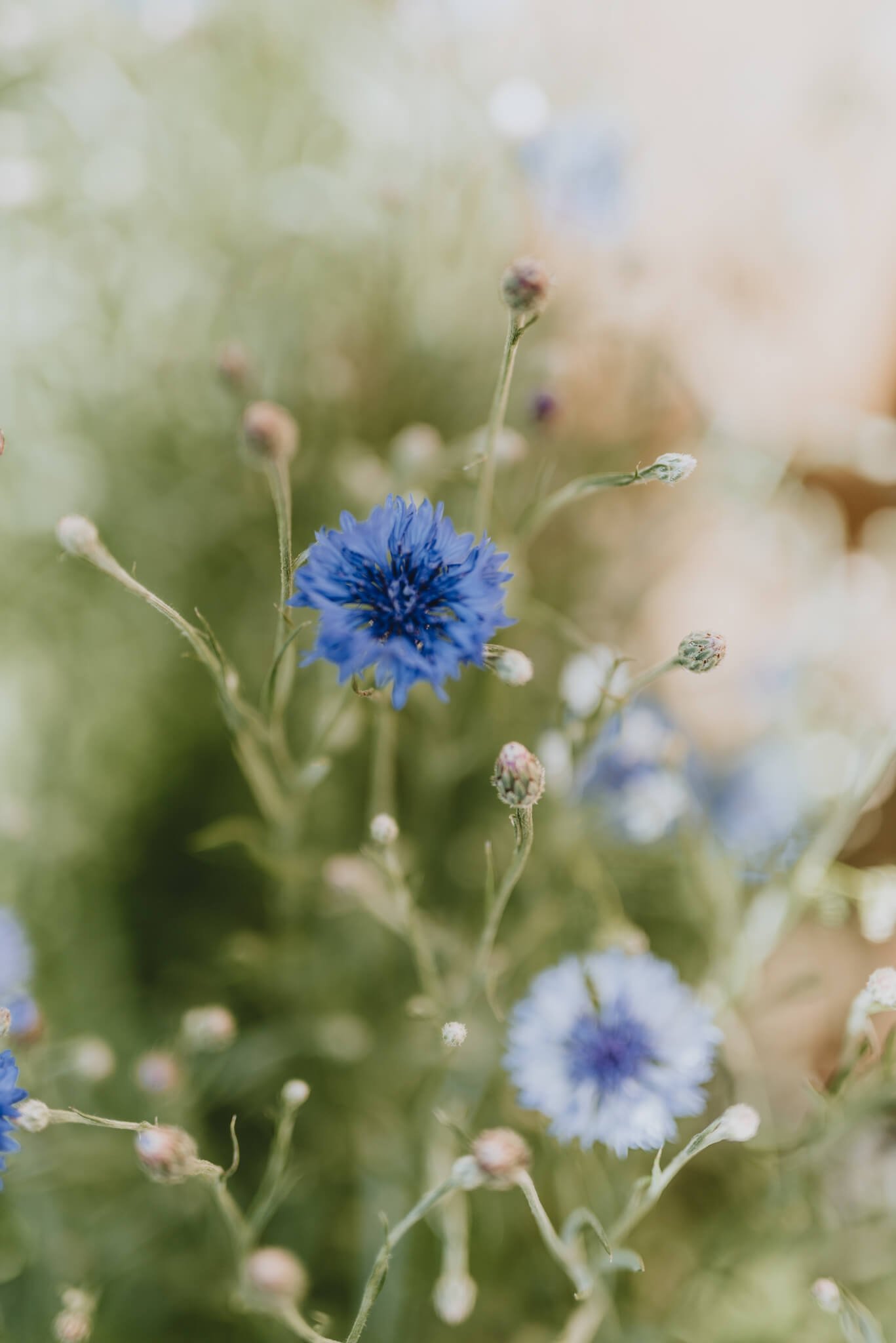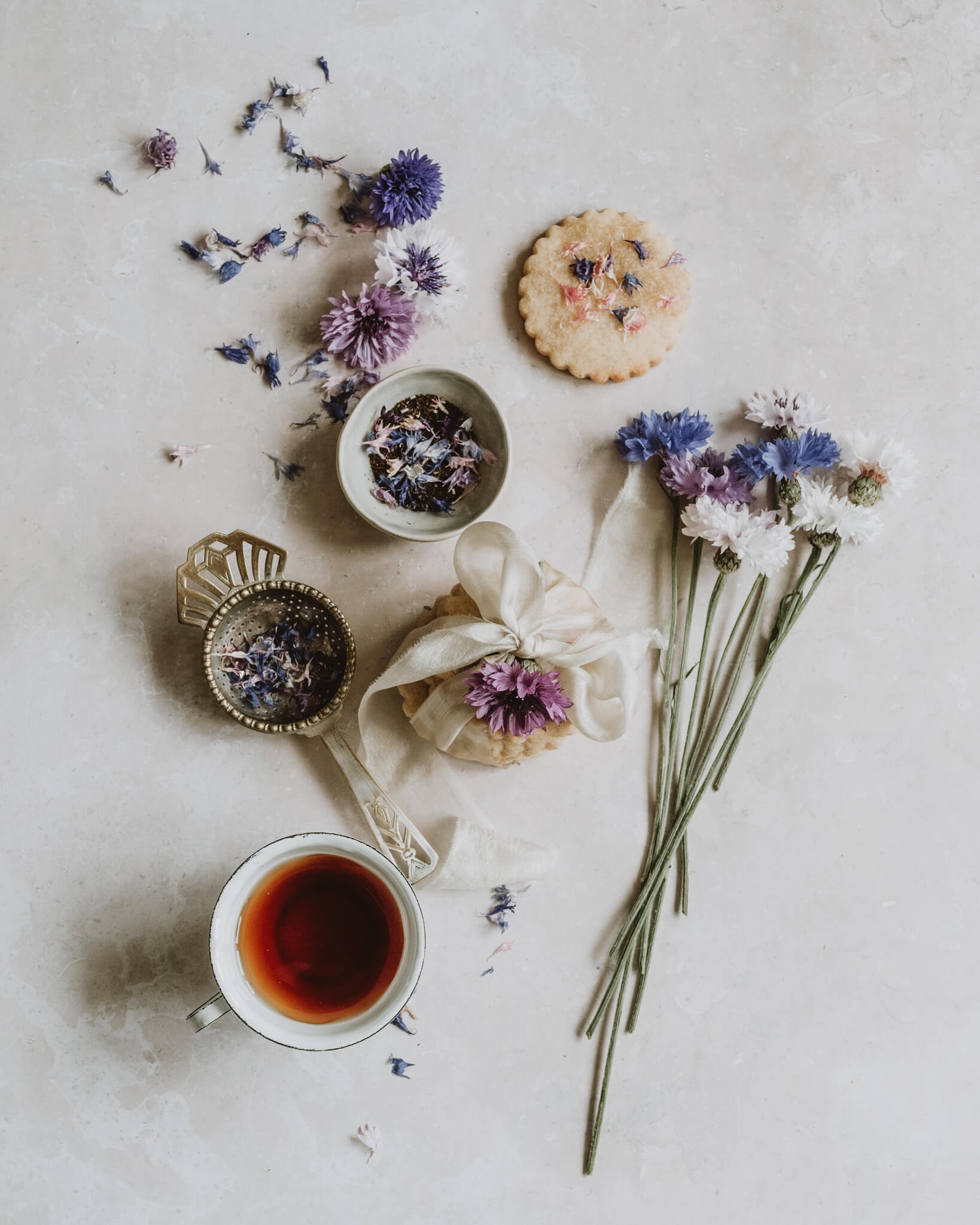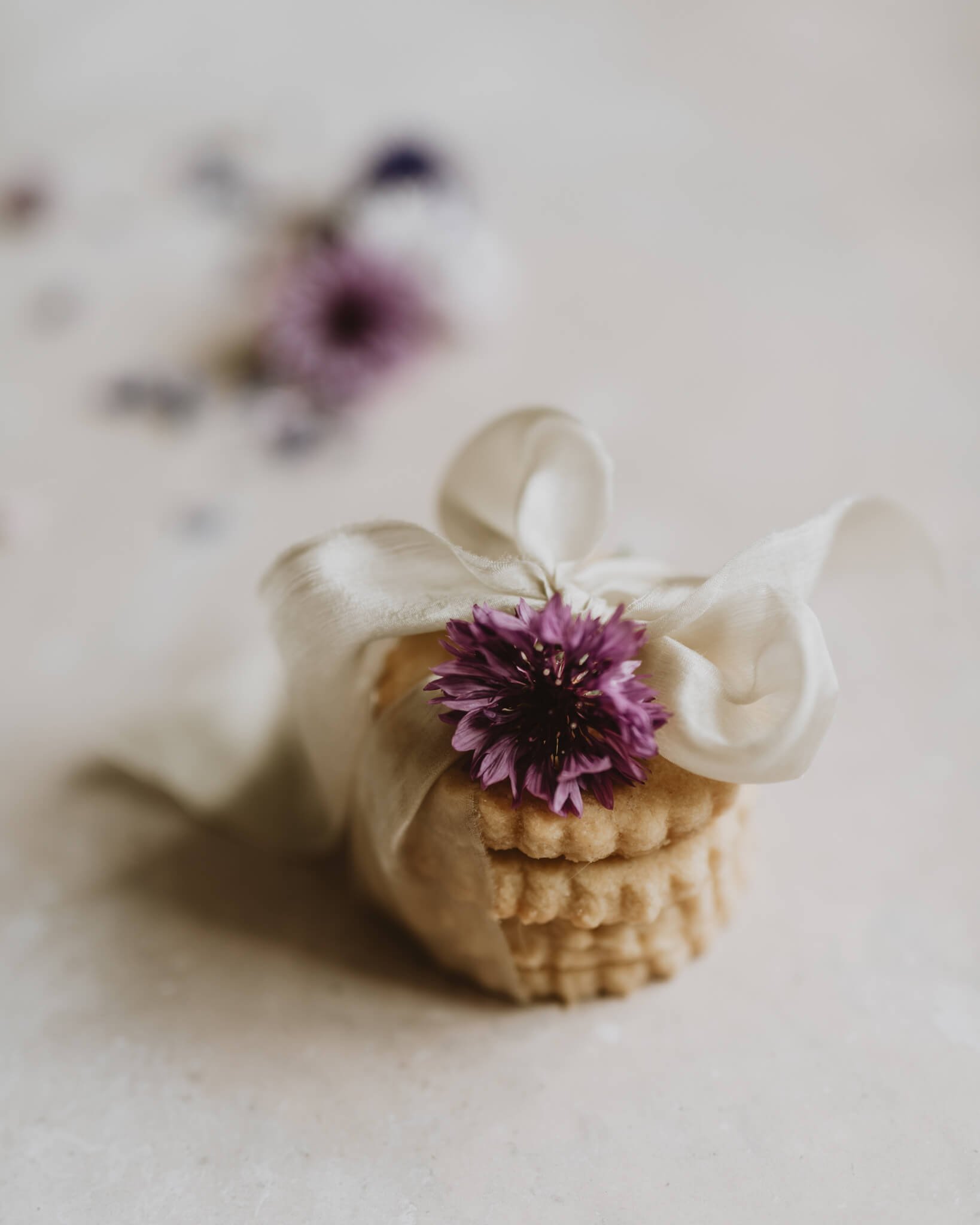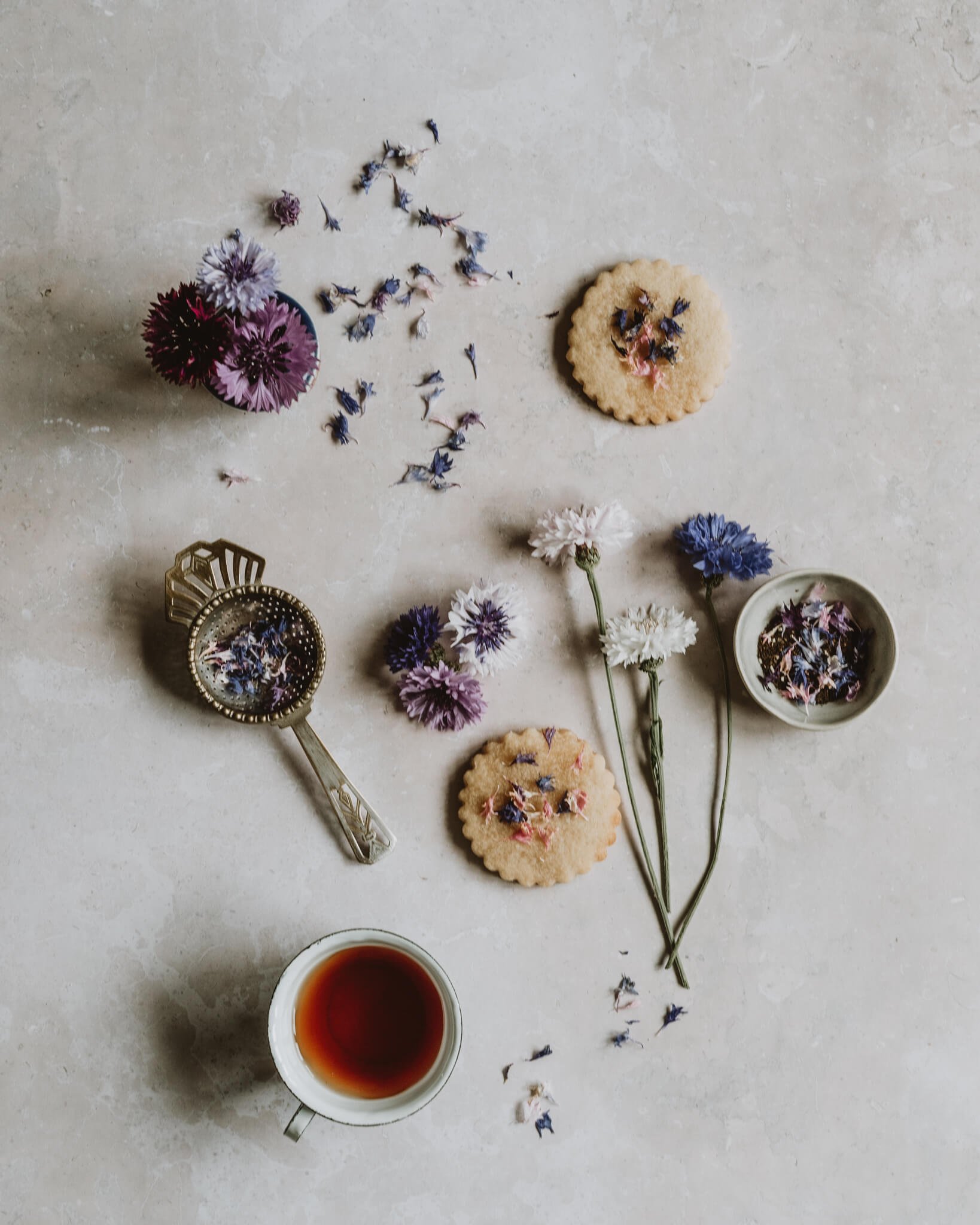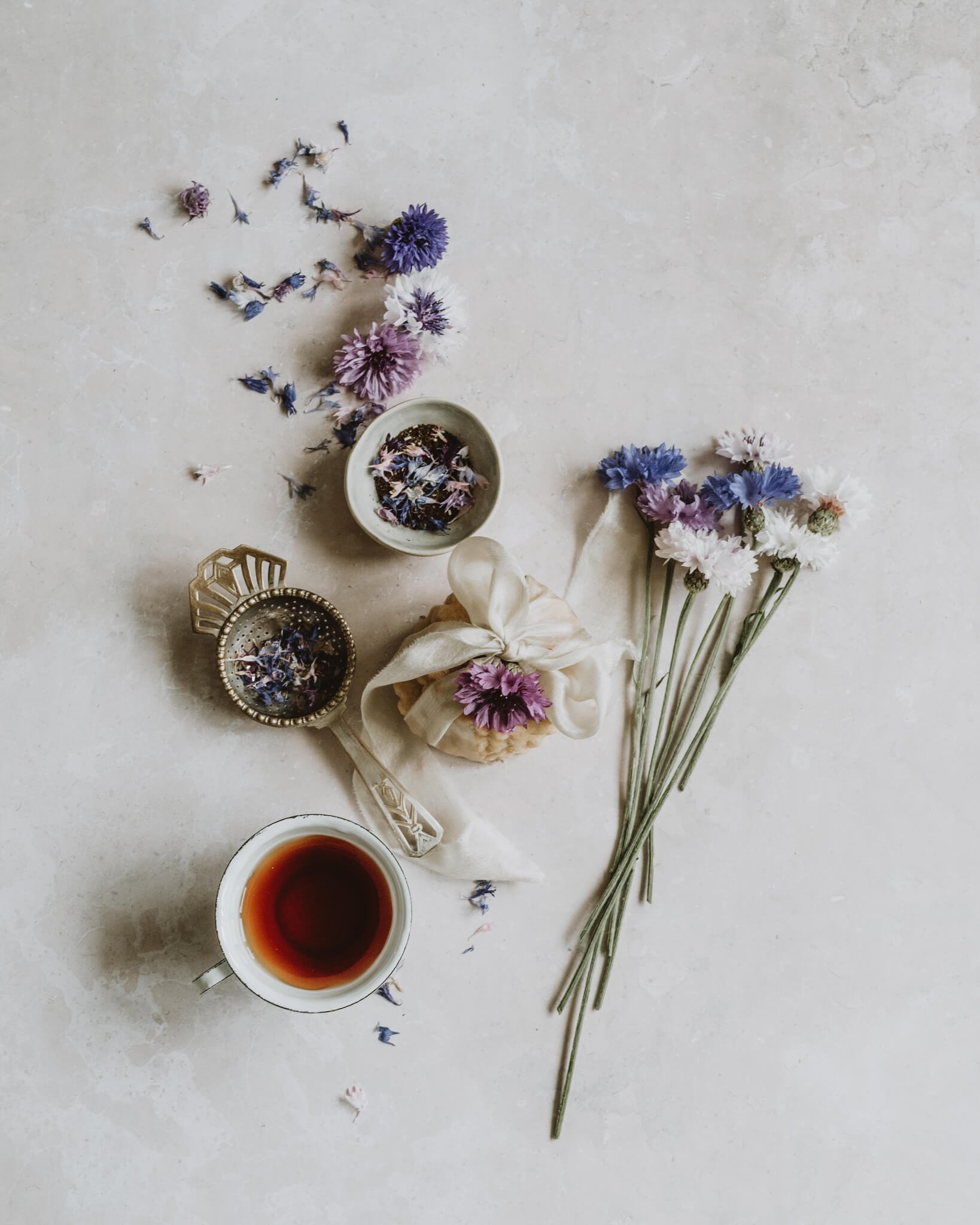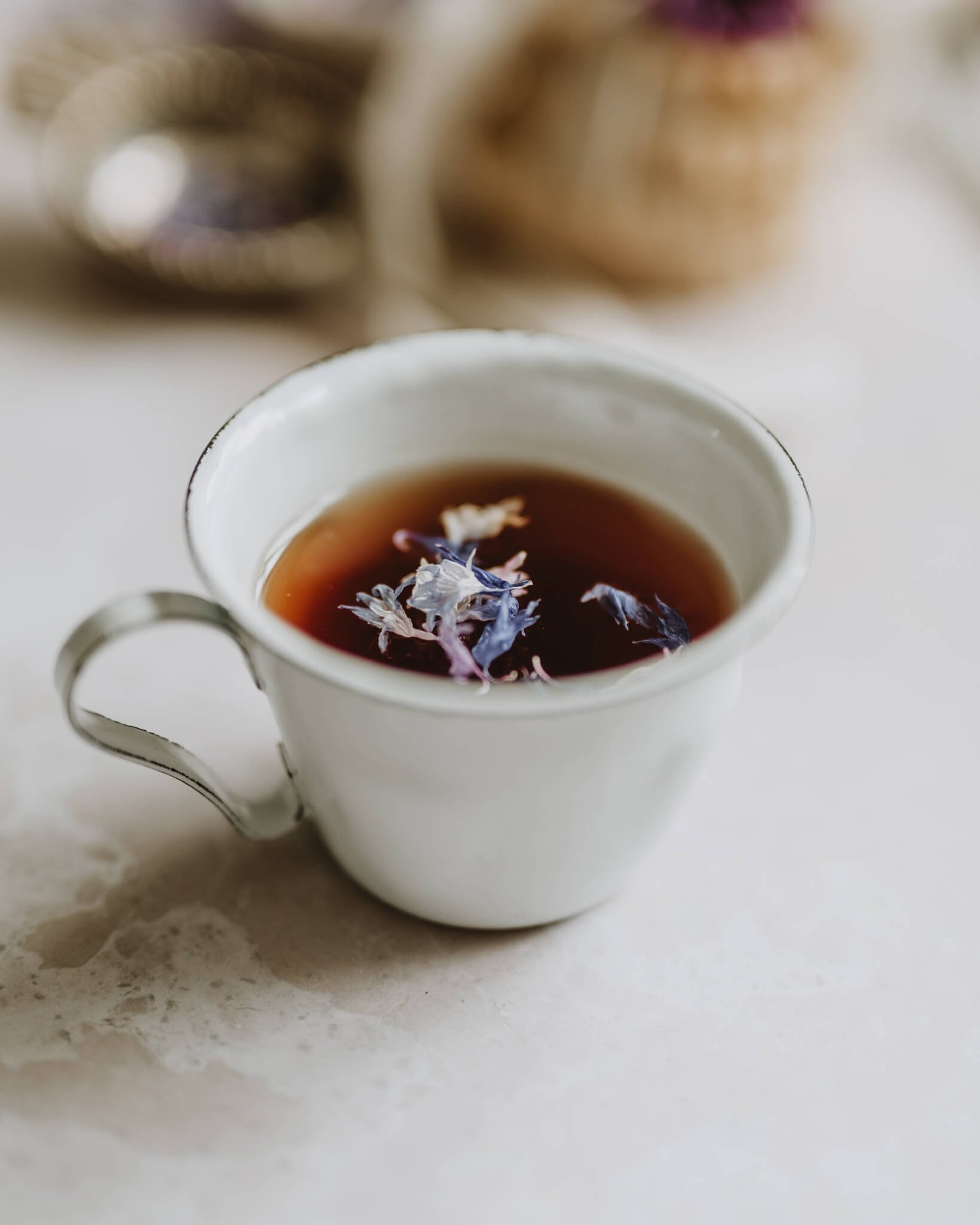Bergamot and cornflowers tea and biscuits recipes
The cornflowers in the strip of garden I’ve dedicated to becoming a little wildflower meadow the cornflowers have come into full bloom. And whilst I enjoy cutting them for our kitchen table, saving some for drying, and leaving some to seed for next year, I really wanted to try some recipes. They make not only lovely decoration for biscuits and cakes, but also pretty, sweet additions to herbal teas. This year my aim is to grow more edible flowers - I like my food to look pretty, and am expanding my vegetable and herb beds now that our large fir trees are gone that blocked all the light into the garden.
How to grow cornflowers & bergamot
Cornflowers are annual flowering plants that thrive in sunny locations with well-drained soil. I sowed the seeds directly into the garden in spring after the frosts had passed, maintaining a spacing of 12 inches between plants. I’ve found cornflowers are relatively low-maintenance and will reward you with their vibrant blue, pink, mauve, or white blooms throughout the summer. The bees have loved them, and I’m pleased to see them attracting so many after I counted so few bees earlier in the year.
Similarly, bergamot, also known as bee balm, is a perennial herb that thrives in full sun or partial shade. I planted bergamot seeds in well-drained soil in my raised bed in the spring and enjoy its aromatic leaves and vibrant flowers.
Bergamot & Cornflower Tea Recipe
I have grown many kitchen garden herbs this year, and you can just make your own blends from the leaves by steeping them in hot water and straining into your favourite mug. If, however, you like black tea, then creating your own tea blend can be fun - with the added bonus that you can blend it to your exact taste. I like to use a ratio of 2:1 of black tea to bergamot leaves (fresh or dried). A tiny bit of lemon zest can be a nice addition, and you can sweeten with honey if you like (although I prefer not).
Bergamot & Cornflower Biscuits Recipe
Earl Grey biscuits have long been a favourite of mine, and this is a twist on those recipes, and they go perfectly with bergamot tea and can make use of any leftover tea in the pot!
Ingredients
380g plain flour
130g icing sugar
1 egg
2 tablespoon of strong bergamot (or Earl Grey tea)
250g of butter (plus some for greasing the baking sheet)
Cornflower petals (fresh)
Method
Beat the butter until fluffy and almost white.
Add the icing sugar and beat until smooth.
Mix in the egg yolk and tea.
Put the flour a board and knead the mixture into a ball, working the flour in as you go. Refridgerate for an hour or so.
Preheat the oven to 180 degrees and line a greased baking tray with parchment.
Roll out the dough to about 3mm thick and use a cookie cutter of your choice, placing onto your baking tray.
Brush each biscuit with the beaten egg white.
Decorate with the conrflower petals.
Bake in the oven for about 8 minutes until lightly golden.
Cool on a wire rack and enjoy served with a cup of tea.
Facts & Folklore About Cornflowers
Historical Significance: Cornflowers have a rich historical background. They were commonly found as a weed in wheat fields, and their presence was considered an indicator of the quality of the soil. Farmers would carefully monitor the abundance of cornflowers as it reflected the fertility and health of their crops.
Symbolism and Associations: Cornflowers hold symbolic meanings in various cultures. They are often associated with love and romance, and in the language of flowers, they symbolize celibacy, devotion, and delicacy. Additionally, cornflowers have been used to represent national pride, particularly in Germany, where they are regarded as a symbol of unity and freedom.
Medicinal Uses: Traditionally, cornflowers have been utilized for their medicinal properties. The flowers were brewed into teas or used in infusions to relieve eye irritations and treat conjunctivitis. The soothing properties of cornflowers were believed to reduce inflammation and promote healing.
Culinary Applications: While primarily appreciated for their ornamental value, cornflowers can also be incorporated into culinary creations. The vibrant blue petals of cornflowers can be used to add a pop of color to salads, desserts, or cocktails. They have a mild, slightly floral taste that complements both sweet and savory dishes.
Pollinator Attraction: Cornflowers possess nectar-rich blooms that attract bees, butterflies, and other pollinators. Their vibrant colors act as beacons, inviting these important creatures to gather nectar and facilitate pollination. By growing cornflowers in your garden, you can contribute to the conservation of pollinators and promote biodiversity.
Natural Dyes: The intense blue color of cornflower petals has been utilized as a natural dye for textiles and fabrics. Historically, the pigments extracted from cornflowers were used to dye fabrics, creating beautiful shades of blue.
Cornflower Varieties: While the classic blue cornflower is the most well-known, there are other color variations available, including pink, white, mauve and lavender. These different hues can be cultivated to create visually stunning displays in gardens or floral arrangements.
Cornflower Tea: In addition to their ornamental and culinary uses, cornflowers can be dried and brewed into a herbal tea. Cornflower tea is known for its subtle floral aroma and is often enjoyed for its calming and soothing properties.
With their rich history, symbolic meanings, and versatility, cornflowers truly captivate the imagination. Whether you grow them for their beauty, incorporate them into culinary creations, or explore their medicinal uses, cornflowers offer a delightful connection to nature's wonders.
